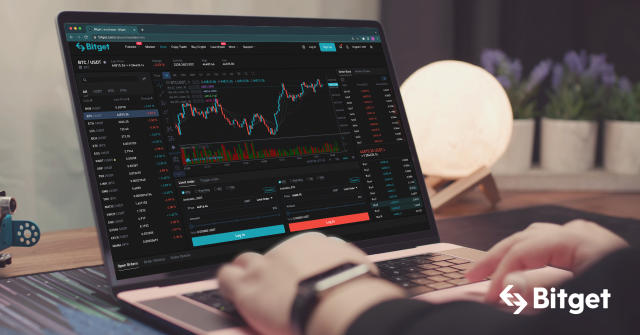Top Hints For Deciding On Automated Systems
Wiki Article
What Exactly Is Backtesting? What Are The Steps To Backtest An Investment Plan?
Backtesting allows you to evaluate the effectiveness of a trading strategy using historical data. This lets you compare the way in which the strategy has did in the past against historical data. Backtesting can be used to confirm the effectiveness of the strategy and to identify possible issues before using a trading strategy in live trading.
These steps can help you backtest your trading strategy.
Set out your strategy for trading - This is where you define the rules and criteria that will guide you in your trading strategy.
Select the historical data: Choose an historical period of market data that includes an appropriate sample of market conditions. The data is available through either a data provider (or trading platforms).
Implement the strategy - Use the software or code to execute the trading strategy based on historical data. This involves making use of data and creating trading signals that are based on the rules of the strategy.
Review the results. Compare historical data including the most important metrics like win rate, profit and loss drawdown, risk-reward and risk-reward.
Improve the strategy based on the results of the backtests, make modifications to the strategy if necessary to enhance its effectiveness. Continue until you are satisfied.
The backtesting process does not guarantee the future results. The results may be affected by various factors, such as data quality or survivorship bias. Furthermore, past performance is not necessarily indicative of future results. To avoid this it is vital to test and validate a trading strategy before it is put into live trading. Follow the most popular divergence trading forex for website tips including stop loss in trading, best crypto trading bot, best crypto indicators, trade indicators, backtesting software forex, best forex trading platform, backtesting strategies, auto crypto trading bot, trading with divergence, automated trading bot and more.

What Are The Benefits And Risks Of Backtesting?
Benefits of Backtesting
Increased confidence - Trading can test a strategy using historical data to gain an understanding of its performance in real-world conditions. This allows traders to make informed choices about whether they want it implemented.
Objective evaluation - Backtesting removes any biases and emotions from the decision making process.
Risk management - Backtesting helps traders to identify and manage potential risks associated to a strategy such as large drawdowns, low returns, or any other irregularities, and adjust accordingly.
The risks of backtesting
The quality of the data used in backtesting could be affected by the quality of the data utilized. It is therefore crucial to ensure that the data is of high-quality, reliable and useful.
Backtesting for Survivorship bias can suffer from the bias of survivorship. This is when the most successful trades aren't accounted for in historical data. It could result in overstated performance.
Overfitting: Overfitting is the result of a strategy that has been optimized to a high degree for historical data. This can result in slow performance when applied to new data.
Inadequacy of real-world conditions - Results from backtesting may not reflect the real-world environment, such as market impacts or slippage. These conditions can significantly affect the effectiveness of a strategy.
Limited historical data - Backtesting is limited to historical data available and may not accurately depict the performance of a plan under future market conditions.
Backtesting is a powerful method for traders to assess their trading strategies and to improve the effectiveness of their trading strategies. But it is crucial that traders be aware of its limitations, and validate the results by employing other methods such as walkforward testing and forward testing. View the best best crypto trading bot 2023 for website advice including crypto futures, position sizing trading, automated trading platform, what is algorithmic trading, backtesting software free, how does trading bots work, stop loss meaning, crypto trading backtesting, backtesting trading strategies, crypto futures and more.
Backtesting Vs Scenario Analysis Vs Forward Performance
There are three methods that can be used to assess the effectiveness of a trading strategy: forward performance, scenario analysis, and backtesting. Each has its particular goals and methods Each has its advantages and drawbacks.
Backtesting
Backtesting is a process of testing a strategy for trading on historical data to determine its efficacy and pinpoint any potential issues. Backtesting can be a method to see how the strategy would have performed had it been employed.
Benefits
Backtesting strategies for improved strategy development lets traders refine and improve their strategies, identifying weak points or weaknesses prior to implementing them live in trading.
Objective evaluation - Backtesting eliminates biases based on emotion and subjectivity that can affect the decision-making process.
Advantages
Data quality- The quality of results from backtesting is affected by the quality and reliability of the data. So, it's crucial to make sure that the data are correct, reliable, relevant, and current.
Overfitting- When a method is optimized too strongly for historical data, it may result in unsatisfactory performance when applied to new data.
The absence of real-world situations Backtesting is not able to reflect real life conditions such slippage, market impacts, and other unpredictable events that could significantly affect the performance.
Scenario Analysis
Scenario Analysis evaluates the potential effect of different market scenarios on a trading plan. The aim of analysis using scenarios is to evaluate the potential risk and rewards of a particular strategy under various market conditions.
Advantages
Improved risk management- Scenario analysis lets traders identify and manage potential risks that come with a strategy like massive drawdowns or prolonged periods of low returns.
Accuracy in understanding: A scenario analysis aids to understand how a strategy could perform in various markets.
Negatives
Limitations on scenarios - The amount of scenarios that can easily be studied for scenario analysis might limit its ability to cover all possible market conditions.
Subjectivity - The analysis of different scenarios is often subjective. It could also be affected by personal biases or assumptions.
Forward Performance
Forward performance evaluates the effectiveness of a trading strategy using real-time data. This lets you see how it performs in real-time trading. The purpose of forward performance is to validate and verify scenario analysis results, and to prove that a strategy can be used in real-world conditions.
Advantages-
Real-world validation Forward performance allows real-world validation, and also helps to uncover potential issues that could be missed during backtesting.
Greater confidence in trading strategies: Strategies for trading can be evaluated on real-time data in order to increase confidence and make informed decisions regarding the implementation.
Disadvantages-
Data is limited - Forward performance is limited because of the lack of real-time market information.
Emotional impact - The fear of losing your savings could affect your the future performance of your business.
Each method is unique and each one can be used to assess a trading system more fully. Combining different methods can help validate scenarios analysis and backtesting, and verify that a strategy is able to be implemented in conditions in the real world. See the top rated algorithmic trade for blog examples including software for automated trading, backtesting tradingview, best trading bot for binance, free crypto trading bots, algorithmic trading software, best trading platform, stop loss order, what is algorithmic trading, best crypto trading platform, cryptocurrency trading and more.

